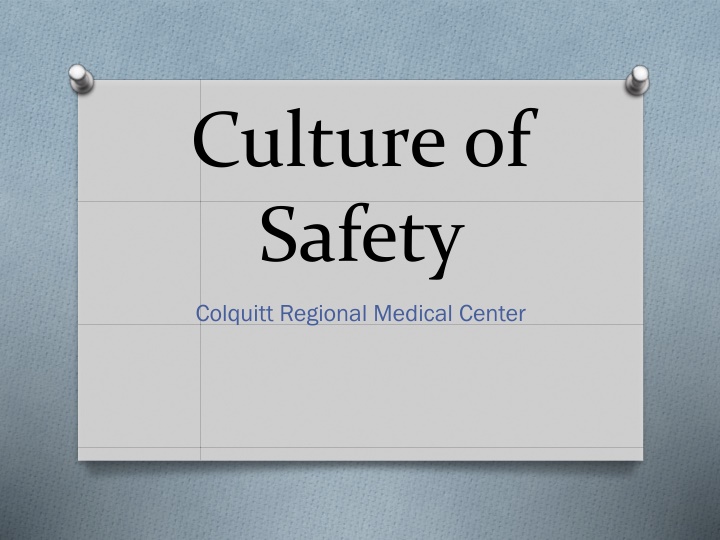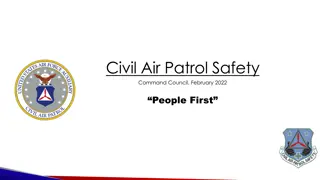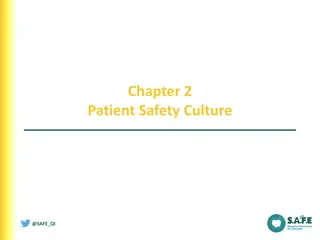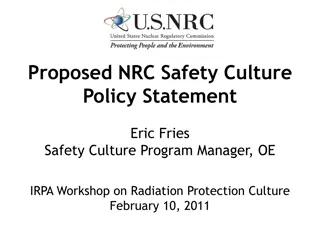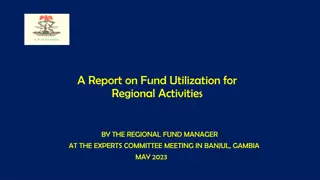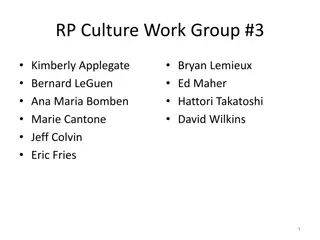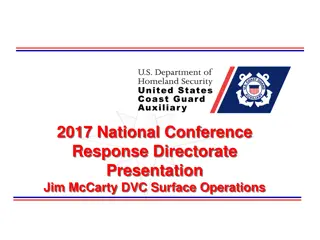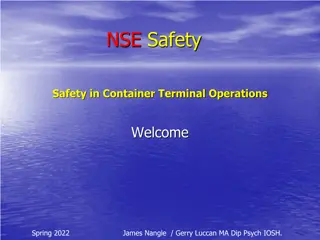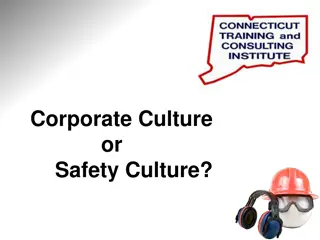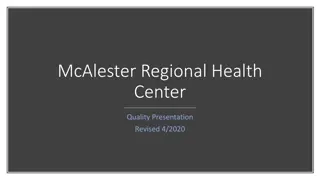Culture of Safety at Colquitt Regional Medical Center
Safety culture is a vital aspect of an organization's commitment to quality and patient safety. The Culture of Safety Survey at Colquitt Regional Medical Center is conducted every three years to assess beliefs, values, attitudes, and behaviors that influence safety practices. The survey results highlight areas of exceptional performance and opportunities for improvement in safety practices within the organization.
Download Presentation

Please find below an Image/Link to download the presentation.
The content on the website is provided AS IS for your information and personal use only. It may not be sold, licensed, or shared on other websites without obtaining consent from the author.If you encounter any issues during the download, it is possible that the publisher has removed the file from their server.
You are allowed to download the files provided on this website for personal or commercial use, subject to the condition that they are used lawfully. All files are the property of their respective owners.
The content on the website is provided AS IS for your information and personal use only. It may not be sold, licensed, or shared on other websites without obtaining consent from the author.
E N D
Presentation Transcript
Culture of Safety Colquitt Regional Medical Center
Culture of Safety Survey Safety culture is the product of individual and group beliefs, values, attitudes, perceptions, competencies and patterns of behavior that determine an organizations commitment to quality and patient safety. -The Joint Commission
Culture of Safety Survey O Safety Survey is completed every 3 years O Most recent survey- May 2016 O Survey was done in conjunction with Employee Engagement survey through
Safety Survey Results Safety Survey Results 100% 90% 80% 70% 60% 50% 40% 30% 20% 10% 0% Employees and I feel free to raise Communication Employees feel free to Communication In my work unit, we This organization This organization Mistakes have led to I am involved in I can report patient My work unit is There is a climate of My work unit works Different work units Employees will freely There is effective The amount of job Important information When a mistake is We are actively doing Senior management Safety Culture
Culture of Safety Exceptional Areas of Performance
Culture of Safety Areas of Opportunity
Culture of Safety Survey O At Colquitt Regional we are committed to a culture of safety. This commitment establishes a "culture of safety" that encompasses these key features: O acknowledgment of the high-risk nature of an organization's activities and the determination to achieve consistently safe operations O a blame-free environment where individuals are able to report errors or near misses without fear of reprimand or punishment O encouragement of collaboration across ranks and disciplines to seek solutions to patient safety problems O organizational commitment of resources to address safety concerns
QAPI Data Update
What is QAPI? O Quality assurance is the specification of standards for quality of service and outcomes, and a process throughout the organization for assuring that care is maintained at acceptable levels in relation to those standards. QA is on-going and helps to identify how the organization is performing, including where and why facility performance is at risk or has failed to meet standards. O Performance improvement (also called Quality Improvement - QI) is the continuous study and improvement of processes with the intent to better services or outcomes, and prevent or decrease the likelihood of problems, by identifying areas of opportunity and testing new approaches to fix underlying causes of persistent/systemic problems or barriers to improvement. PI can make good quality even better.
Organizational Wide Indicators O Patient Flow O Readmissions O Hand hygiene O Patient Experience O Aiming for Zero Harm O Infection Prevention O Surgical Site Infections, MRSA, CAUTI, CLABSI
Departmental Indicators O Each department has department specific indicators. These are performance improvement projects that are specific to your department such as food temperatures in dietary, cleanliness in environmental services, LWBS in ED or distance of ambulation on 5thfloor. Know at least one of your departments indicators
Hand Hygiene The single most effective means to prevent infections in the healthcare setting.
5 Moments for Hand Hygiene O Before patient contact O Before aseptic task O After body fluid exposure risk O After patient contact O After contact with patient surroundings *remember before and after PPE removal
Hand Gel Versus Soap & Water O Gel for routine procedures O Gel in, gel out O Gel for episodes of care O Gel after removal of PPE O Soap & Water when hands are visibly soiled O Soap & Water after personal use of the toilet O Soap & Water before eating O Soap & Water when caring for C-diff patients O Soap & water after several gel applications
Hand Hygiene O Hand Gel- Once dispensed from applicator, rub in until completely dry O Soap & Water- Wash hands for 20 seconds O Sing the Happy Birthday Song
